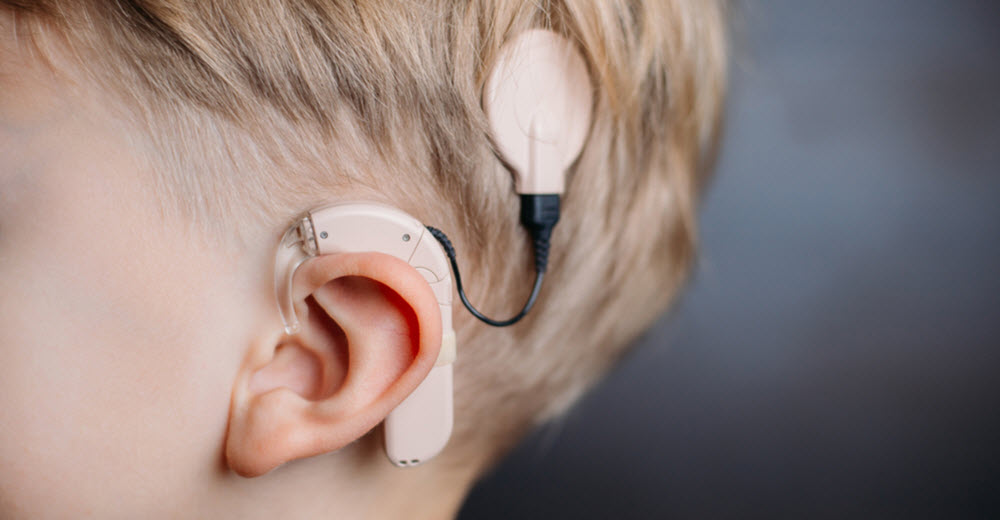For a person with moderate-to-profound sensorineural hearing loss (SNHL), a cochlear implant (CI) can help provide sound perception.
The cochlear implant is a type of neuro-prosthesis that electrically stimulates the auditory nerve. With training, a person can learn to interpret these signals as sounds. Many CI users eventually gain useful hearing and speech perception abilities. For speech perception, lip-reading tends to remain an important component.
A typical cochlear implant consists of two main components:
- The inside component is the part implanted into the body. It is comprised of electronics, a coil capable of receiving signals, and an array of electrodes that are located in the cochlea. The electrodes stimulate the cochlear nerve.
- The outside component is the sound processor. It contains a microphone(s), digital signal processor chips (DSP chips), battery, and coil. The coil transmits signals across the skin to the implant. The outside component is normally worn behind the ear, but that is not a requirement. It can for instance be better to attach it to clothing when the user is a young child.
A cochlear implant device without any outside component is currently being developed.

Surgery
The inside component of the CI is implanted through a surgical procedure, during which the patient is under general anesthesia.
Most patients can leave the hospital within 24 hours after implantation.
How well does CI:s work?
A majority of the individuals who receive cochlear implants demonstrate a significant improvement in speech recognition ability. Meta-analyses from 2017 and 2018 showed a large improvement in quality of life, e.g. due to an increased ability to engage in social activities and improved environmental sound awareness.
Studies show that how well a person will hear sounds, and understand speech, after receiving cochlear implants vary greatly within the recipient group. Examples of factors that are considered to contribute to this variation:
- Health of the cochlear nerve
- How the implant is situated in the cochlea
- Age when receiving the implant
- Duration of hearing loss prior to receiving the implant
- Reason for hearing loss
- Parental involvement (for children)
- Education level
- An individual´s general ability to re-learn
Widespread usage
By late 2012, nearly 325,000 cochlear implant devices had been implanted in humans.
By 2016, the United Kingdom-based Ear Foundation estimated that the number of cochlear implant recipients in the world had reached 600,000.
Manufacturers
Examples of cochlear implant manufacturers:
- Cochlear Limited
- MED-EL
- Oticon Medical
- Advanced Bionics
- Neurelec (a division of William Demant)
- Nurotron
How does it work?
In a person with normal hearing, the peripheral auditory system will receive sounds and convert them into movements of hair cells in the cochlea. This will result in an influx of potassium ions into the hair cells, and the depolarisation results in an influx of calcium. More of the neurotransmitter glutamate will be released, and when the cochlear nerve is excited it sends signals to the brain. In the brain, these signals is converted into the experience of sound.
A cochlear implant bypasses most of this process. The outer device picks up sounds and digitize them. The digitized sound is converted into electrical signals, which are sent to electrodes in the inner device. These electrodes are situated in the cochlea, and when they receive electrical signals it results in a stimulation of the cochlear nerve. The cochlear nerve sends signals to the brain, and these signals are converted into the experience of sound.
Important parts of a cochlear implant device
- One or more microphones. They are found in the outer component and will pick up sounds from the environment.
- A speech processor, located in the outer component. It will selectively filter sounds, and is set to prioritize audible speech.
- A transmitter for radio frequency transmissions. Located in the outer component, it sends power and signals across the skin of the user, to the internal component.
- The receiver/stimulator in the internal component. It receives signals from the outer component, converts them into electrical impulses and send them along.
- The electrode array embedded in the user´s cochlea.